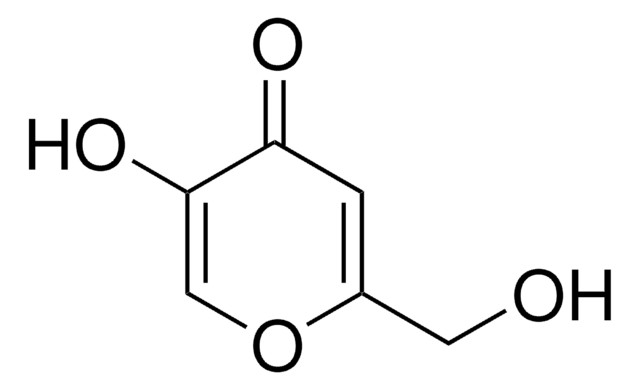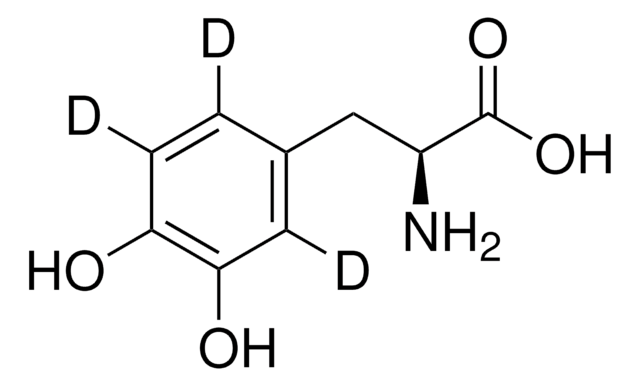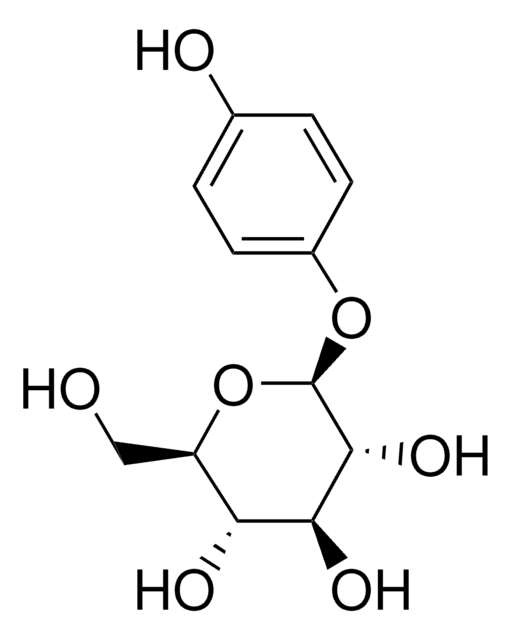T3824
Tyrosinase from mushroom
lyophilized powder, ≥1000 unit/mg solid
Synonym(s):
Catechol Oxidase, Monophenol Monooxygenase, Monophenol, dihydroxyphenylalanine:oxygen oxidoreductase, Polyphenol Oxidase
About This Item
Recommended Products
biological source
fungus (mushroom)
Quality Level
form
lyophilized powder
specific activity
≥1000 unit/mg solid
mol wt
119.5 kDa by electrophoresis
128 kDa by sedimentation velocity diffusion
133 kDa by LS
application(s)
diagnostic assay manufacturing
shipped in
wet ice
storage temp.
−20°C
Looking for similar products? Visit Product Comparison Guide
General description
pH optimum is 6-7
Molecular weight: 128 kDa by sedimentation velocity diffusion; 133 kDa by light-scattering measurements, and 119.5 kDa by electrophoresis.
Tyrosinase is a copper-containing oxidase, which has activity for both catechols and cresol. It is responsible for browning reactions. The enzyme is reported to have two binding sites for aromatic substrates and a different binding site for oxygen-copper. The copper is probably Cu(I), with inactivation involving oxidation to Cu(II) ion.
Application
Biochem/physiol Actions
Physical properties
pH optimum is 6-7
Molecular weight: 128 kDa by sedimentation velocity diffusion; 133 kDa by light-scattering measurements, and 119.5 kDa by electrophoresis.
Unit Definition
Signal Word
Danger
Hazard Statements
Precautionary Statements
Hazard Classifications
Resp. Sens. 1
Storage Class Code
11 - Combustible Solids
WGK
WGK 3
Flash Point(F)
Not applicable
Flash Point(C)
Not applicable
Personal Protective Equipment
Certificates of Analysis (COA)
Search for Certificates of Analysis (COA) by entering the products Lot/Batch Number. Lot and Batch Numbers can be found on a product’s label following the words ‘Lot’ or ‘Batch’.
Already Own This Product?
Find documentation for the products that you have recently purchased in the Document Library.
Customers Also Viewed
Our team of scientists has experience in all areas of research including Life Science, Material Science, Chemical Synthesis, Chromatography, Analytical and many others.
Contact Technical Service








![N-[3-(2-Furyl)acryloyl]-Leu-Gly-Pro-Ala](/deepweb/assets/sigmaaldrich/product/structures/805/876/96b5fb57-71c8-4c6b-b5d2-fafe7374cd85/640/96b5fb57-71c8-4c6b-b5d2-fafe7374cd85.png)